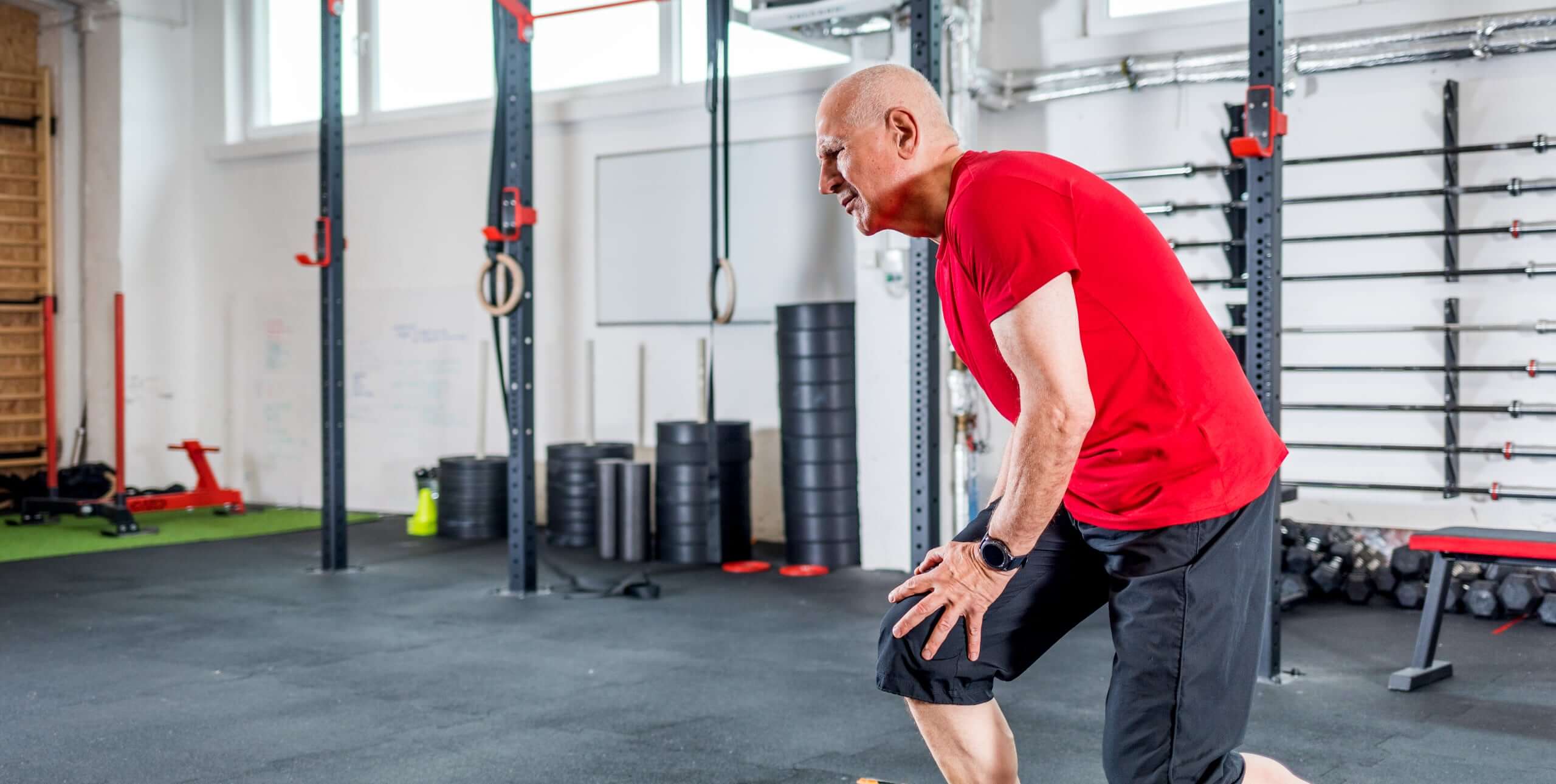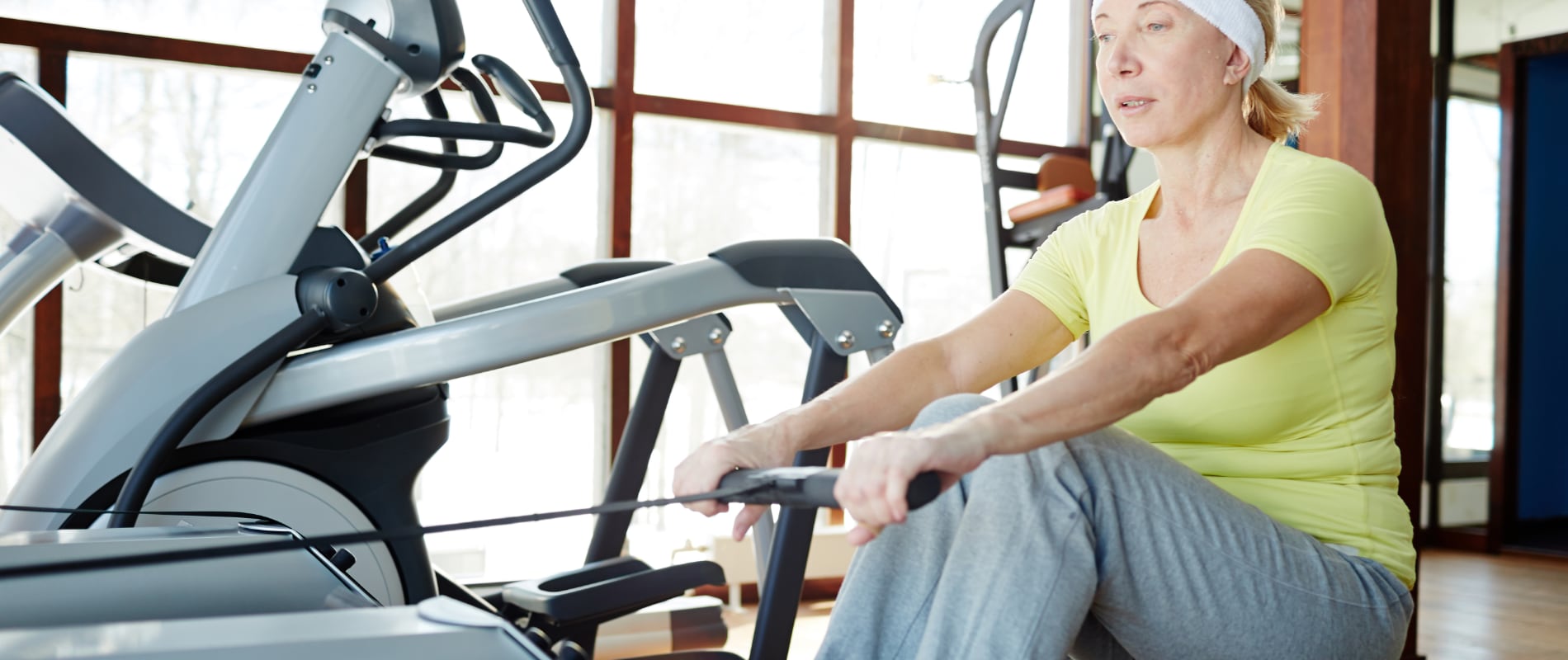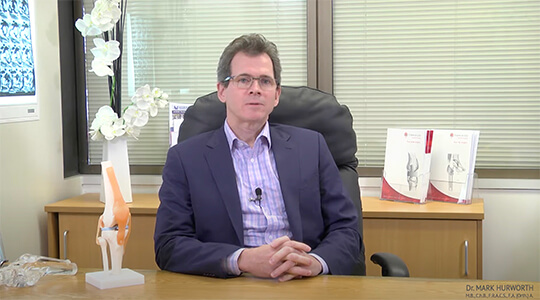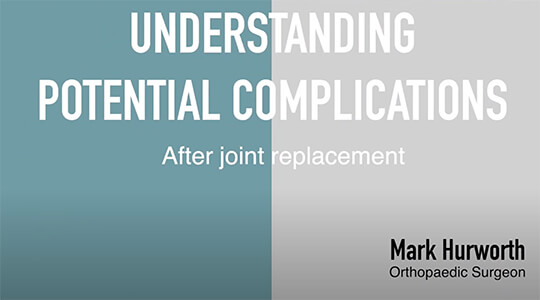Knee replacement Perth
Knee replacement: how can you achieve the best outcome
This operation is my most commonly performed joint replacement. The first step is to find out if you really need it. Below we talk about ways you can avoid surgery by managing your condition, and ways to get the best outcomes if you are having surgery.

My orthopaedic practice in a nutshell
Reasons for knee replacement surgery
Why would I need knee replacement surgery?
Pain and loss of function are the two common presentations. The pain can be most intense when you walk, and sometimes bother you at night. If it’s keeping you awake at night or you can’t work and go about your normal daily life, it may be time to discuss knee replacement.
When considering knee replacement, you need to be clear that your symptoms are severe enough to:
- justify the risks of this type of surgery,
- justify the recovery time and inconvenience after knee replacement surgery.

Mr Mark Hurworth, Knee replacement Perth
“So what to expect? One of my mentors once told me that – after knee replacement – about 1 in 20 patients feel perfect, about 18 out of 20 feel better, and about 1 in 20 patients feel worse. This is probably not far from the truth, although I like to think and hope that my results are better!”
My experience is that your motivation as a patient in preparing for, and getting moving after your procedure, make a significant difference to outcomes. This would indicate that patient motivation and effort (what we call “agency”) makes more difference than the newest innovations such as robotic surgery. It takes two to tango with this type of surgery.
When we look at knee replacement, the typical causes for requiring it are:
- Osteoarthritis: in Australia, it is the most common cause and it is related to age and genetics.
- Excess weight: Remember that you can typically reduce symptoms by 50% by losing 20% of body weight.
- Inflammatory arthritis: Rheumatoid, crystal disease, psoriasis, inflammatory bowel disease can all be involved.
- Post-traumatic damage: Typically after an ACL injury, a meniscal injury or fracture in your younger years.
Computer-assisted and robotic knee replacement
What types of surgery are available?
Replacement is best understood as a resurfacing of the joint – both the top (the femur) and the bottom (the tibia). Sometimes, but not always, a replacement will include the kneecap (the patella).

Mr Mark Hurworth, Orthopaedic surgeon Perth
“Everything depends on the condition of your knee and where the damage is. Sometimes we recommend a partial replacement (unicompartmental), replacing only the inner half.
The two main metal components have a ‘bearing’ in between them which is made of a specially treated plastic.”
Robotic knee replacement is a big topic in knee replacement surgery. It is based on physically entered landmarks, and the robot doing calculations so the surgeon is guided where to cut. The surgeon still does the cutting, the robot directs the angle of the cuts based on algorithms that the surgeon has entered. The latest in robotic knee surgery involves more portable robots that do not clutter the operating theatre as much as the earlier generations, and in my practice, we are looking at implementing the newer generation of robots.
In addition, especially for bilateral knee replacements, I often use patient-specific technology. This involves using detailed scans obtained prior to surgery to provide guidance before and during surgery. This system makes sense to me because all the advantages of robotic knee surgery are available without the disadvantages – in particular the cost of the system, and the extra time you spend in theatre – robotic surgery inevitably involves more time in theatre for the patient.
Story continues below video gallery
Videos about knee conditions and surgeries
Avoid knee replacement
Can I avoid knee replacement surgery?
I find this a really interesting area and one that my research is particularly focused on.
The answer is obviously that sometimes you can avoid it. You can certainly often postpone or defer it. This is not a type of surgery that should be rushed into without considering other non-surgical treatments that can make a big difference.
The non-surgical treatments that have good evidence, and therefore that I would ask all my patients to consider are:
- Weight loss: 20% loss of weight typically equates to 50% reduction in symptoms. Equally, excess weight can increase the risk of complications such as wound breakdown, infection and deep venous thrombosis.
- Exercise: Closed-chain exercise on the bicycle or rowing machine, ie smooth gliding exercise, using both legs, are effective.
- Anti-inflammatories
- Changing your activities: I had a patient recently who, after she was referred to me, stopped working in the cold room and reduced the time she was squatting, walking and standing. Her symptoms, not surprisingly, had become manageable, so we decided to wait before considering surgery.
- Steroid injections: if you have a lot of swelling (often indicating inflammation) in your knee, this can be effective.
So if you have been told you need knee replacement surgery, it is worth considering the above simple, low-cost and low-risk options. This is the type of operation where you should try to manage your symptoms for as long as possible without surgery.

Knee replacement recovery
What are the risks, restrictions and timeframes?
Major studies show improvement in knee replacements for around two years, so it is important to be realistic – this is a slow and steady progress-type recovery, unlike hip replacement which can result in quite dramatic early improvement. That being said, early progress is essential: I want you to be able to straighten the knee and bend it to at least 90 degrees (a right angle) as soon as possible after surgery.
Risks are important to understand before embarking on this surgery. There are risks that are specific to implant surgery, which is another reason why this sort of surgery is not entered into lightly, without careful thought, and having exhausted other options.
An overview of the risks:
- Infection: 1:100 for men, 1:200 for women. Increased risk in obese patients, patients on immunosuppressive medication, diabetics. If you get an infection with an implant in-situ, this can be catastrophic and occasionally result in amputation. At the very least it may involve multiple trips back to the operating theatre, sometimes a complete change of implants and the eventual outcome will sometimes be suboptimal, with significantly longer rehabilitation time.
- DVT: around 1:50 patients will get a blood clot in the leg, which is most often small and a nuisance for a few weeks due to increased swelling and pain. Occasionally blood clots will migrate to the lungs (embolism). Fatal pulmonary embolism is around a risk of 1:10,000 after knee and hip replacement surgery. We will put you on bloodthinners to reduce risk, and also calf pumps after surgery.
- Numbness on the lateral side of the knee: Everyone gets this, and it is because the small sensory nerves are cut as we enter the knee joint. It improves for around 2 years.
- Stiffness: The best predictor for motion after surgery is how much motion you had before the procedure, but occasionally people still end up with the knee being stiffer than before the surgery. Initially, everyone feels very stiff because of the swelling in the knee, so don’t give up!
- Pain: Some patients still don’t get relief from their pain after this surgery, at least not as much as they hoped for. This is a complex issue and involves multiple variables.
- Kneeling: About 50% of people can kneel after this type of surgery.
- Revision surgery: The latest results suggest good survival for these implants. I would normally suggest 80% of implants will still be functioning well after 20 years in-situ, and 95% at 10 years.
- Fracture, dislocation: These are rare.
- Severe neurovascular injury: The major vessels and nerves are at the back of the knee, and while we protect them during surgery there is a 1 in 1000 incidence of injury. Again, damage to these structures can be limb-threatening.
- Compartment syndrome: An extremely rare but serious complication.
Best outcomes for knee replacement
How do I get the best outcomes?
Now that we know the risks, let’s focus on ways to get the best outcomes when you undergo a knee replacement.
Preparing for knee surgery
Motion is lotion. I encourage you to get in the best shape possible prior to surgery. We know that a BMI over 40 is associated with a higher rate of complications and that this relationship is logarithmic, not linear ie the heavier you are, the higher your chances of some complications: infection, wound problems, deep vein thrombosis in particular. I therefore strongly advocate you getting your weight down to less than BMI 40 before surgery.
This type of surgery involves a painful and prolonged rehabilitation. You want to be sure that you have tried and exhausted your options for nonoperative treatment before considering surgery, and are prepared to deal with the pain likely to arise from the operation.
To prepare for knee surgery I recommend a dedicated program on a static exercise bike, in order to strengthen your quadriceps and hamstrings because they are often deconditioned with age and a painful joint. It is interesting that – as you start using the joint a bit more on the bike – your symptoms will often improve. Our research in this area is world-leading.
As much as exercise in the swimming pool can be social and popular, it does not help your muscles as much as a good walk or some time on the static bike i.e. land-based exercise is better than pool-based.
Recovery after knee surgery
Knee replacement is typically a painful operation, one that may produce debilitating pain for around six weeks.
In the first few days, ice and elevation are useful for the swelling, sometimes even for a few weeks. In the first two weeks, you will need strong medication (typically opiates) to stay on top of your pain and keep your leg moving. Remember that opiate medication is addictive, and you need to aim to be off it by six weeks. Swelling is what everyone struggles with and it needs to be managed and “pushed through” to some extent. We focus on closed-chain exercise, especially using a static bike with which we can monitor and measure your motion.
Driving is not a good idea typically for 6 weeks, and most patients will benefit from the use of crutches for 4-6 weeks.
Knee replacement surgeon Perth
Why Dr Mark Hurworth?
Most Perth patients appreciate having all the options on the table, understanding that there are both operative and nonoperative treatment options, and learning about ways to improve their outcomes and managing things as much as they can. Surgeons are generally wary about patients who are very keen to have surgery, just as sensible patients should be wary about surgeons who seem eager to operate.
We are implementing groundbreaking research in the area of remote nonoperative, pre-and post-operative management, so ask about this if you are interested in participating.
One thing that I have been pioneering in this area is what the “running start” program. This involves doing a pre-operative workup with remotely monitored exercise equipment at home, in order to optimise your function before surgery. Effectively I have found that without this, I am asking my patients to do a long-jump from a standing start, hence why I call it a “running start” program. We will chat about that when you come in.
If you do need knee replacement surgery, then the findings of my research will be available to you so we can implement the best program to prepare you and optimise recovery. Your own contribution makes a big difference, and you can count on my team’s expertise to make your journey as smooth as possible. This is our core business!


